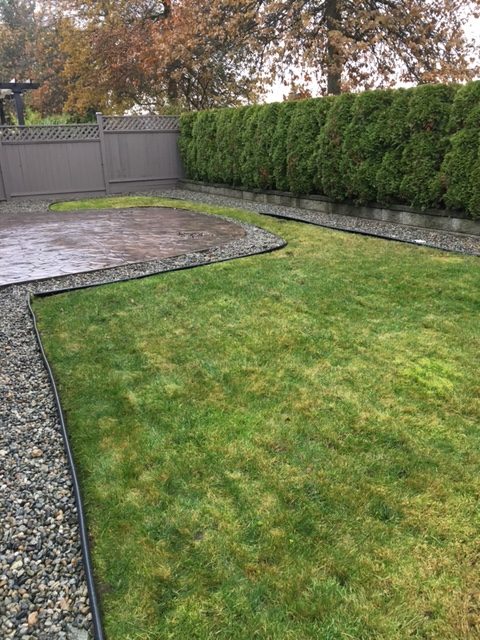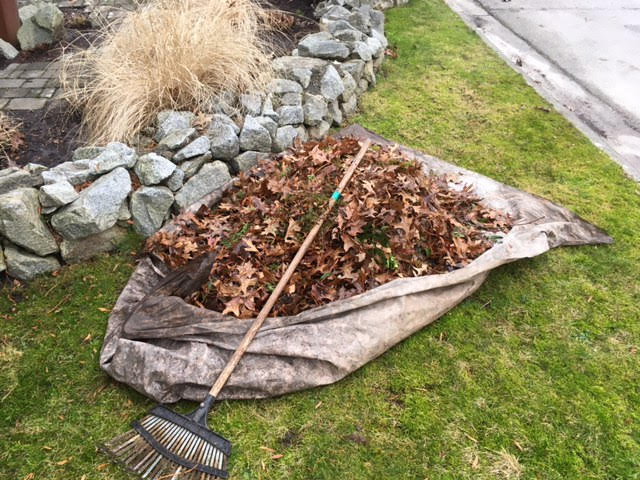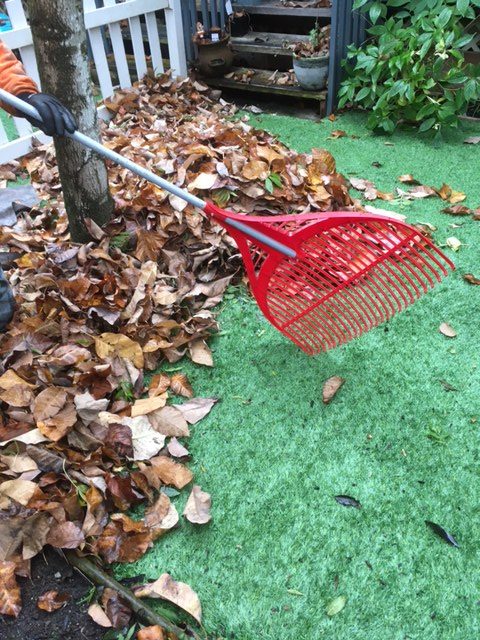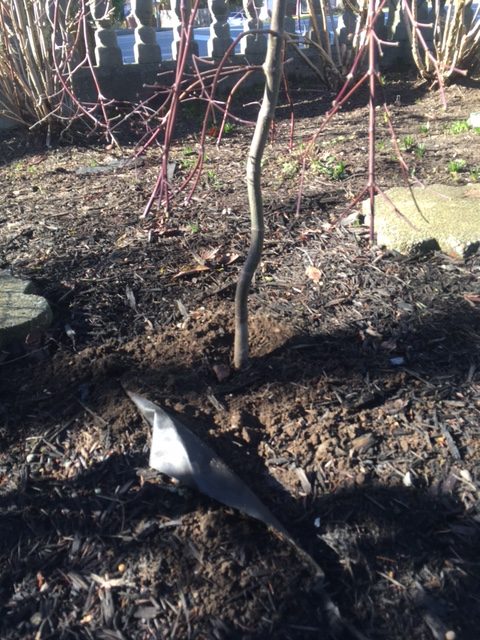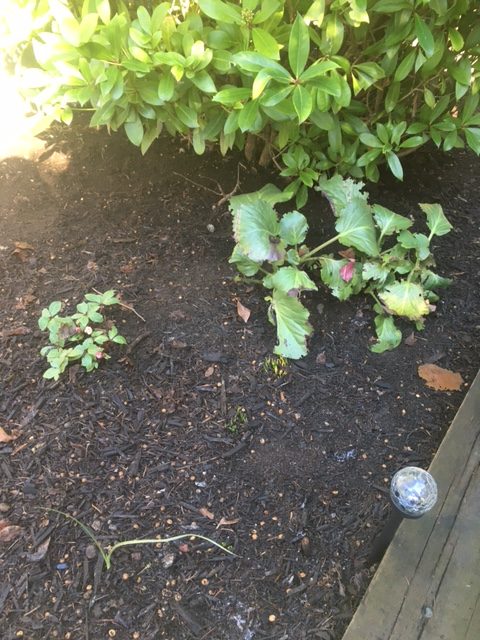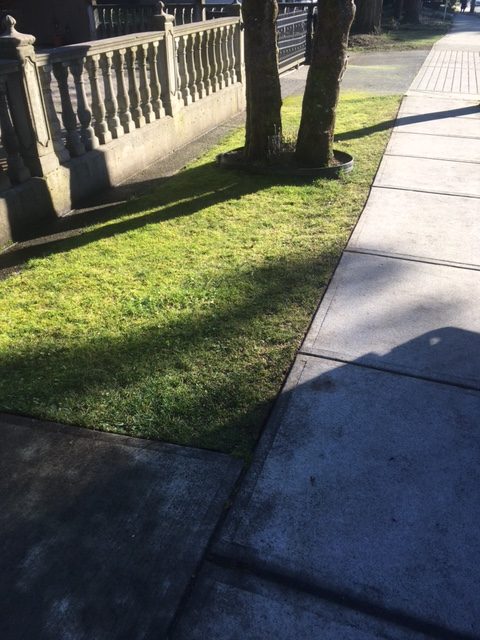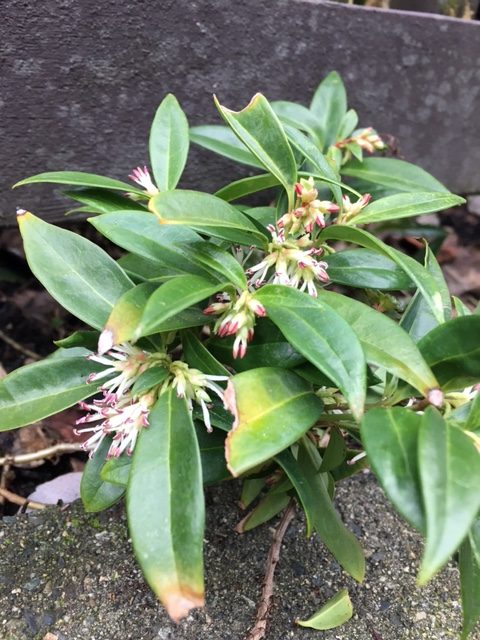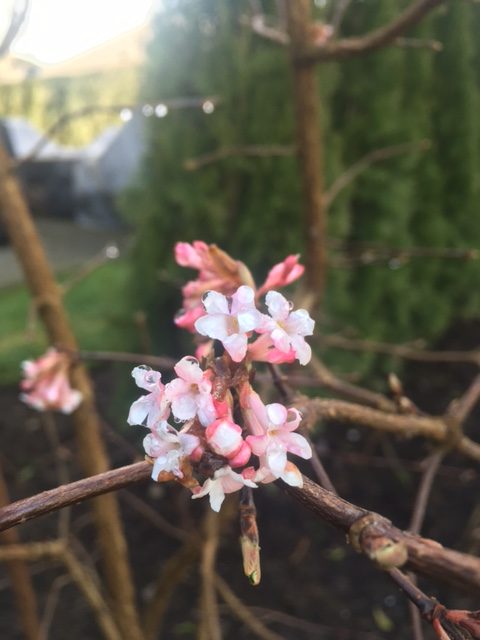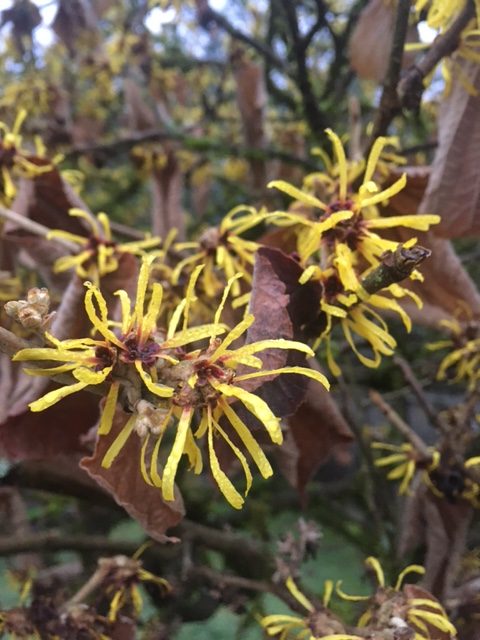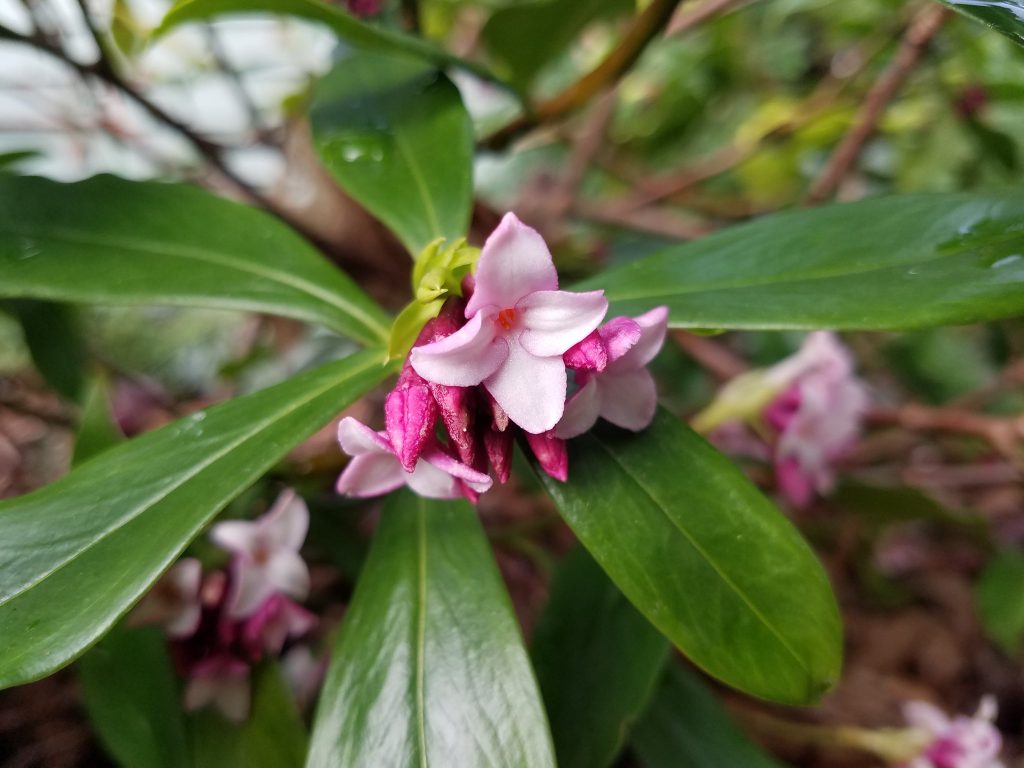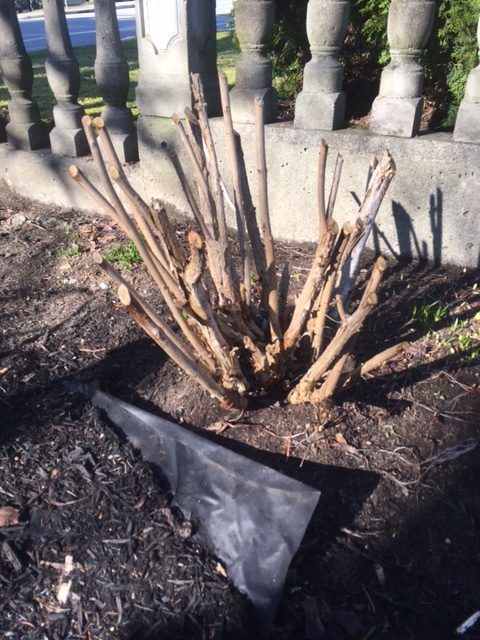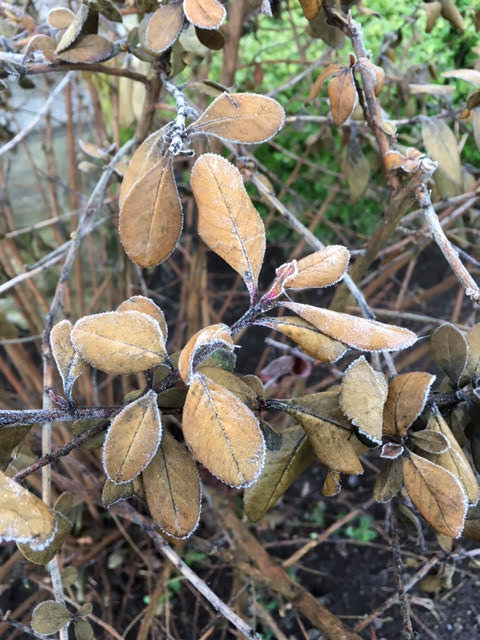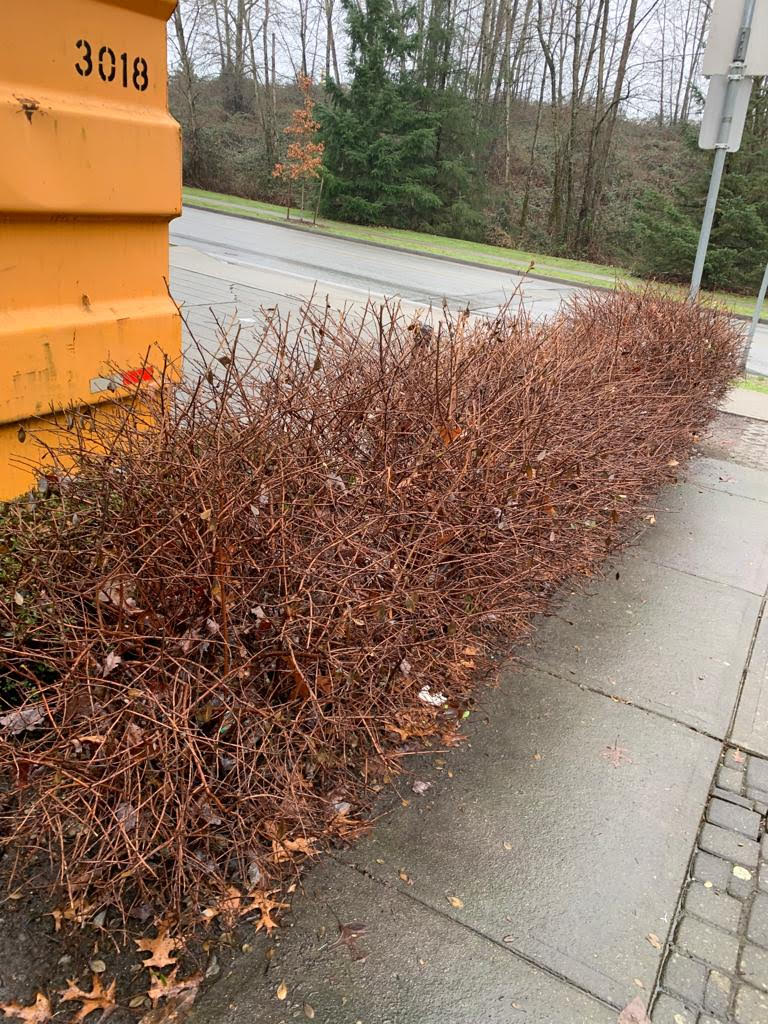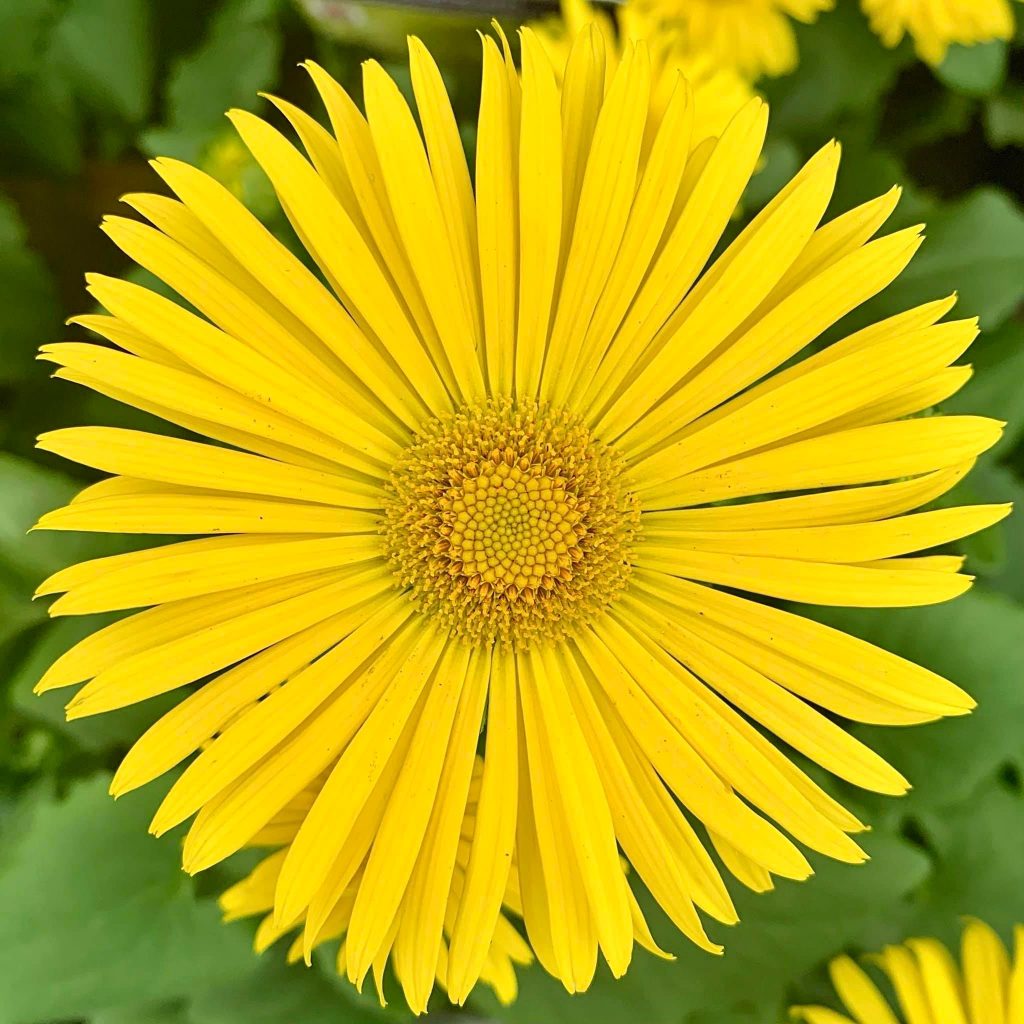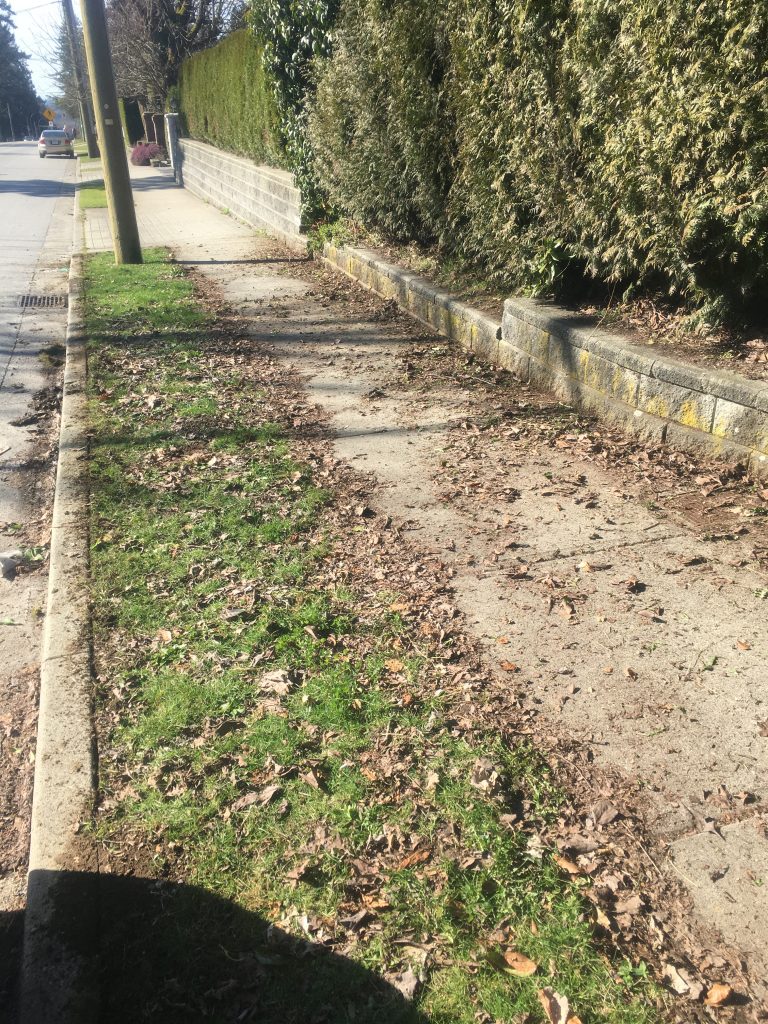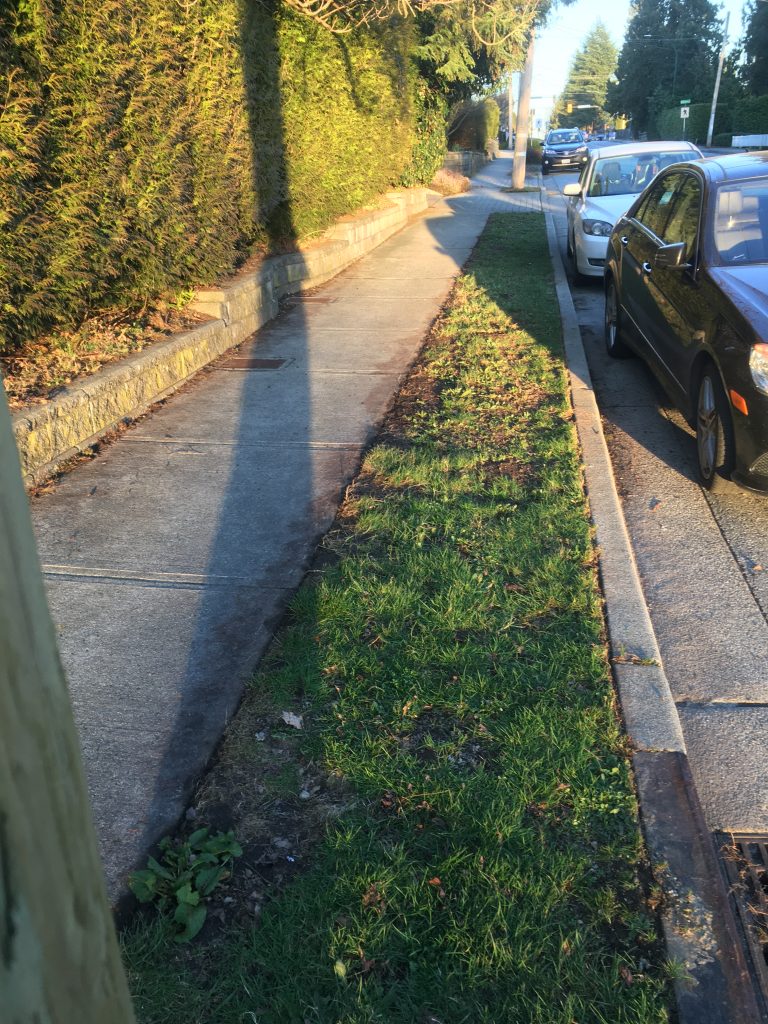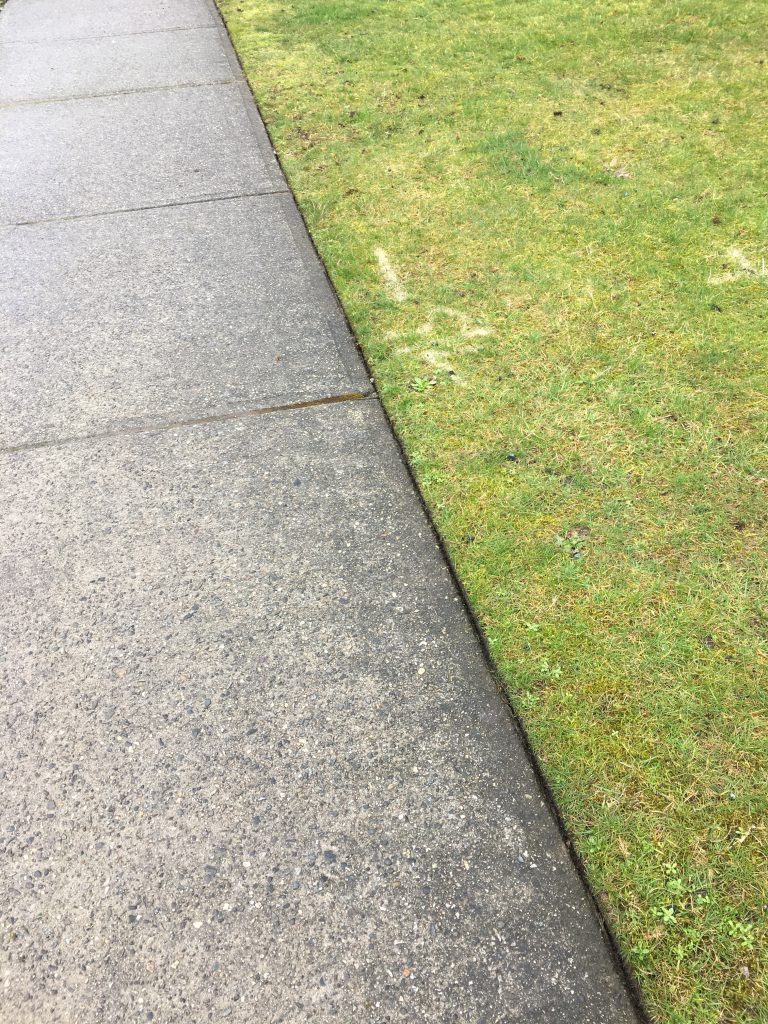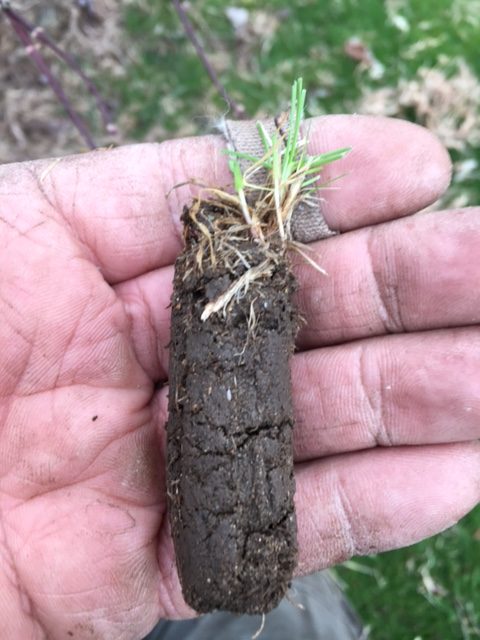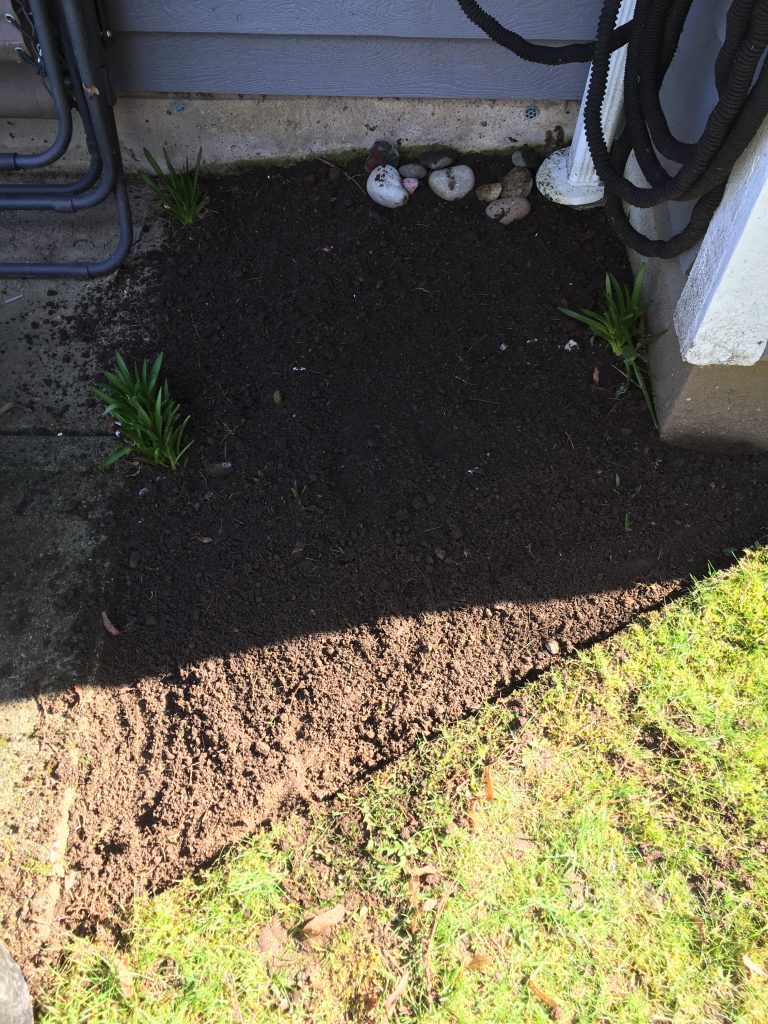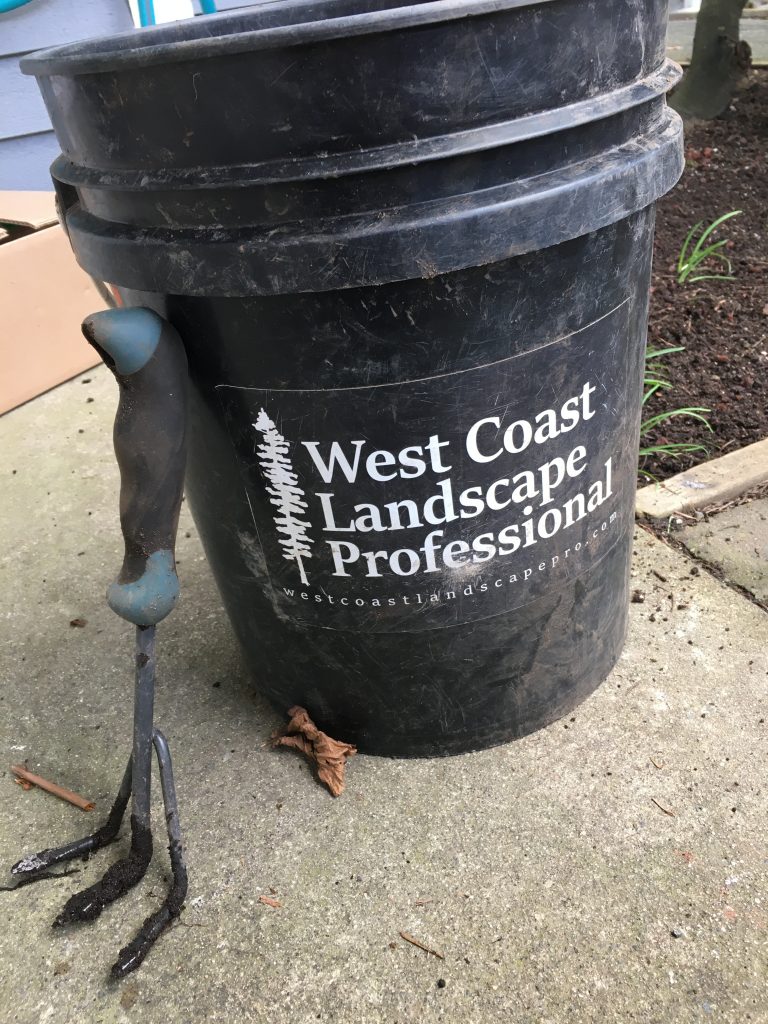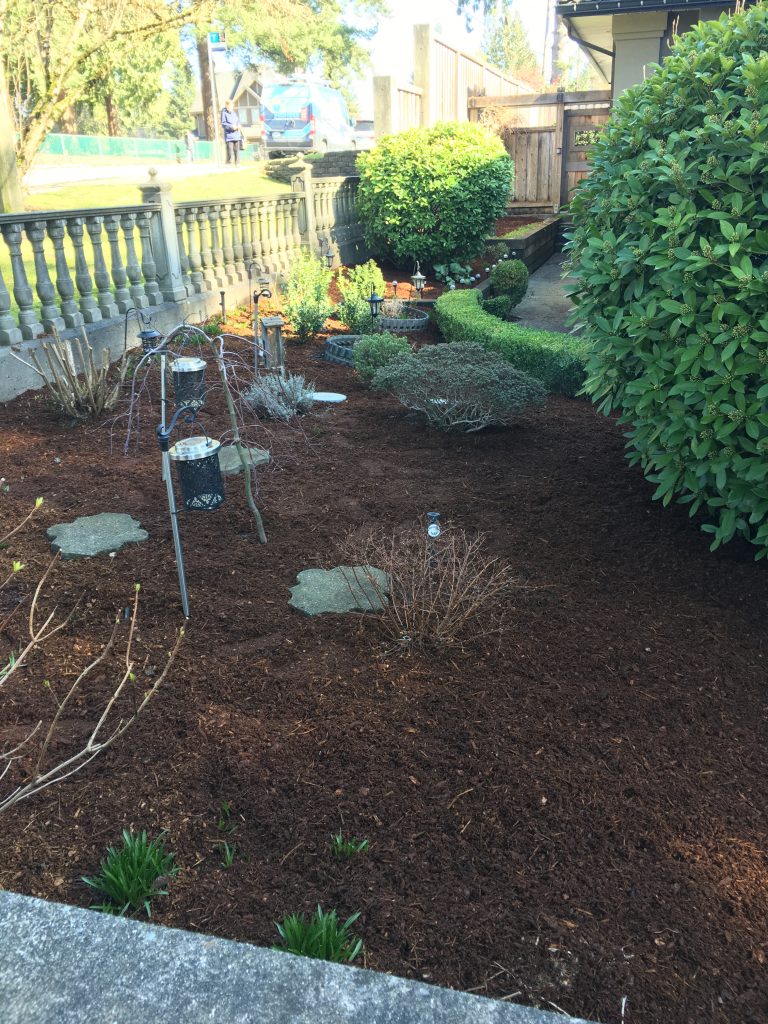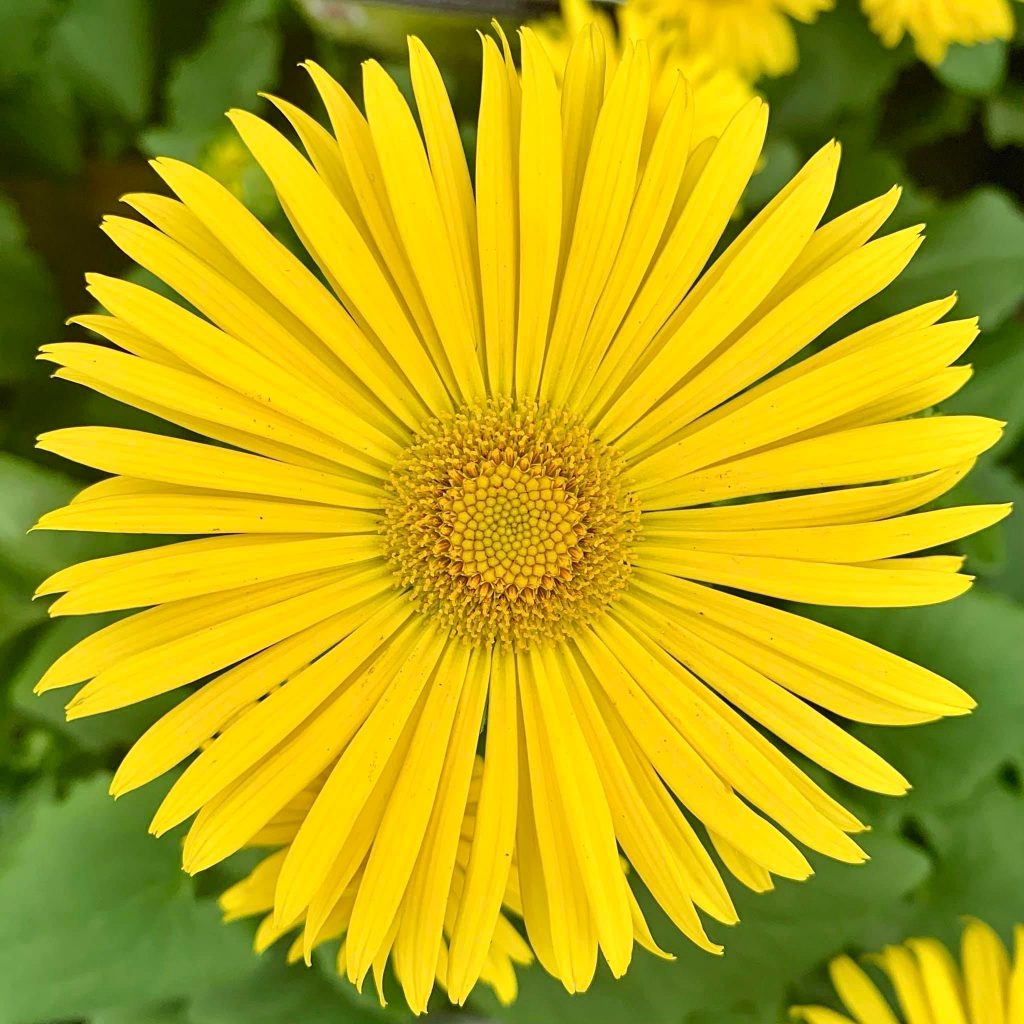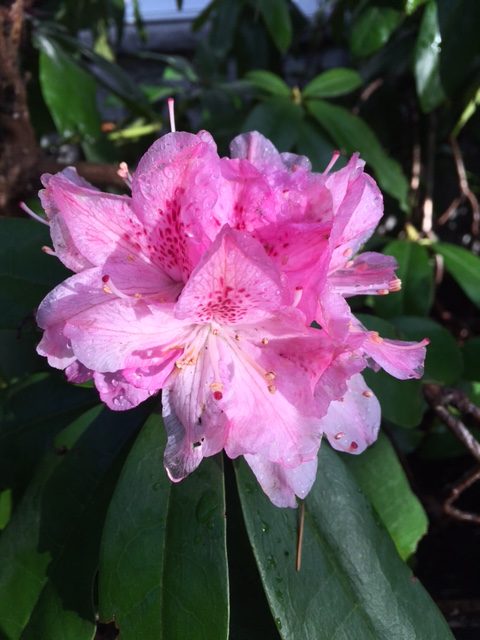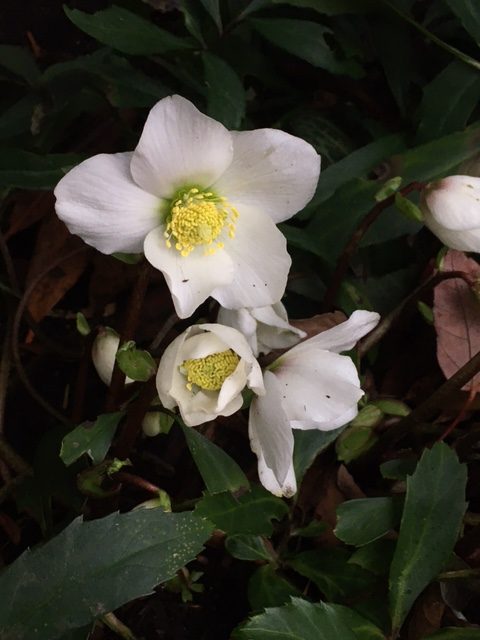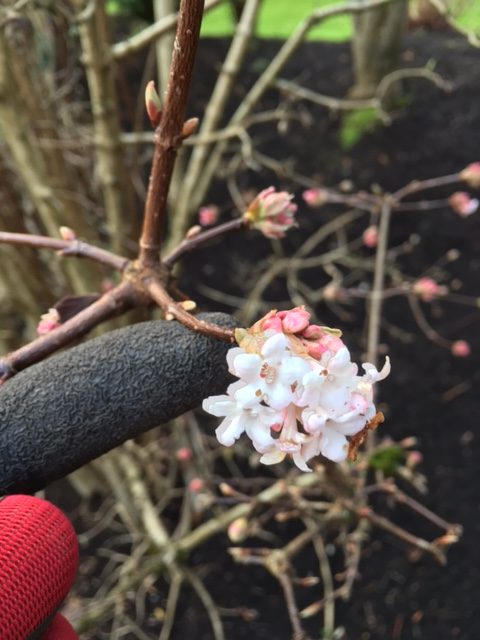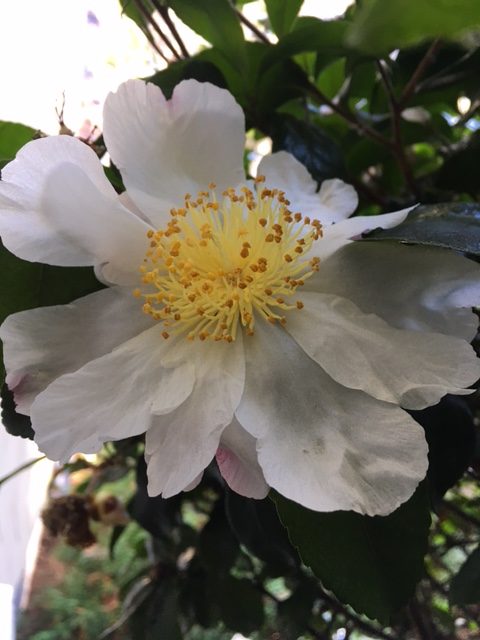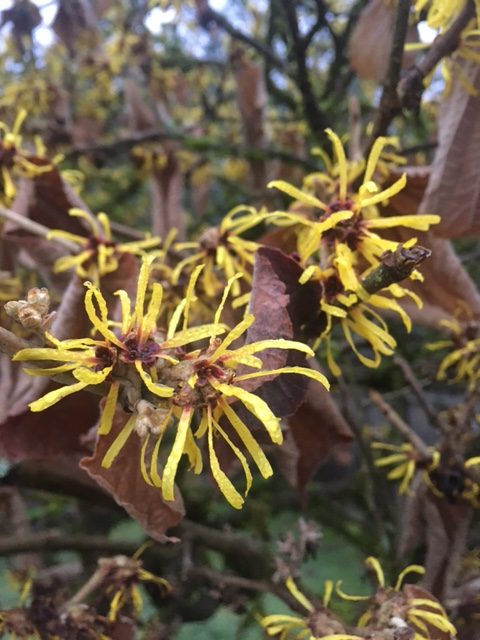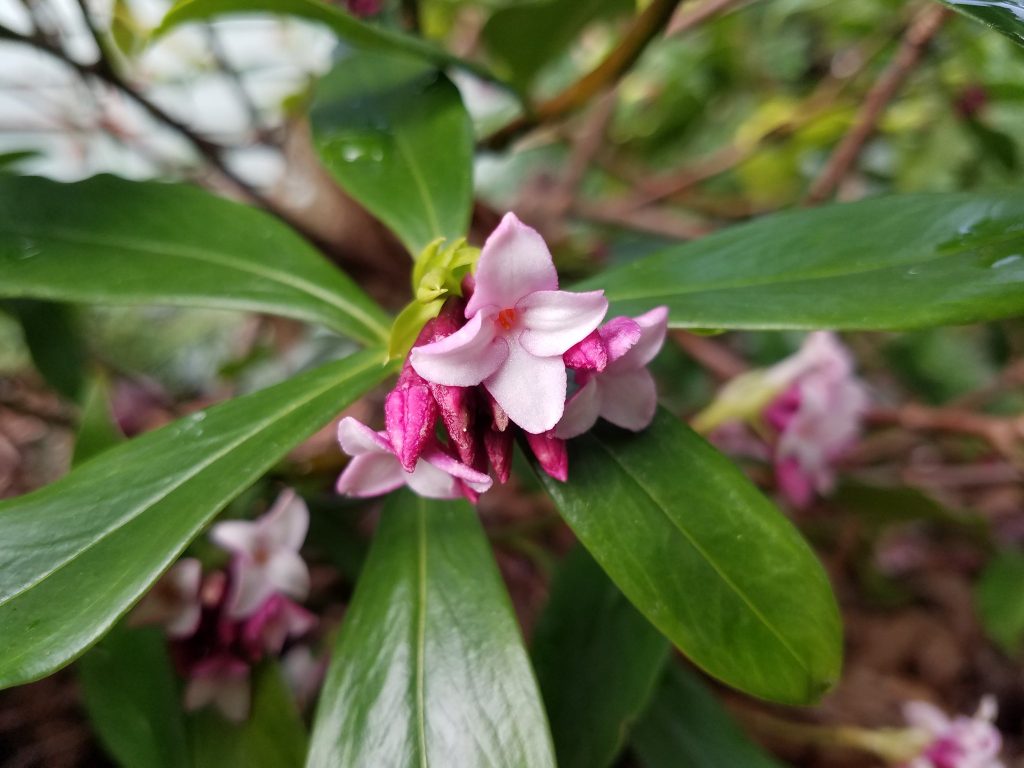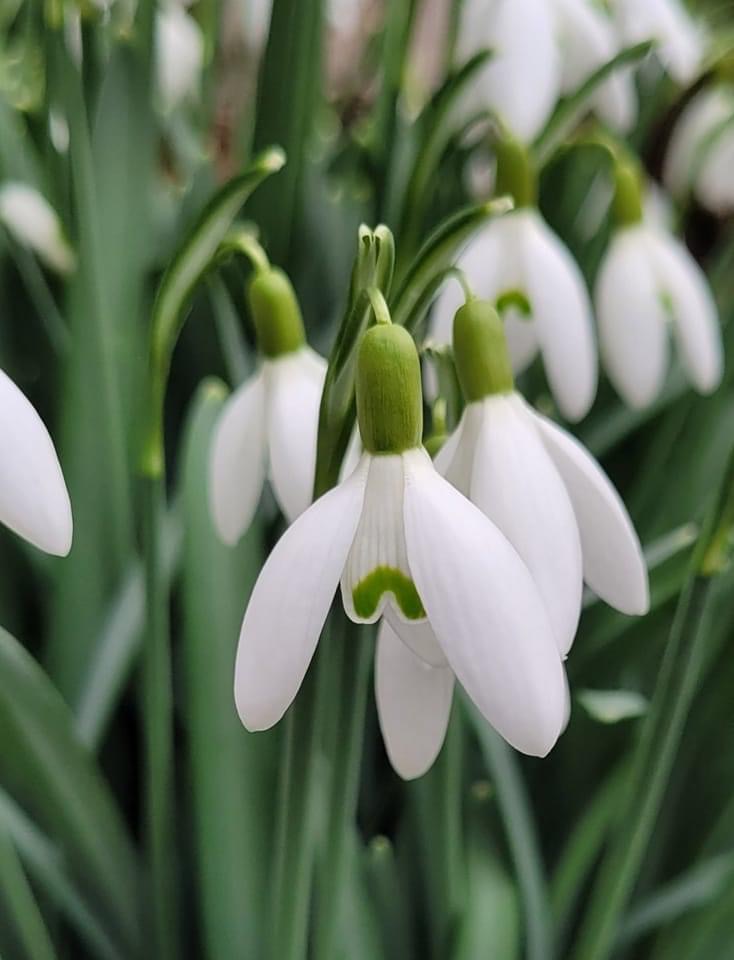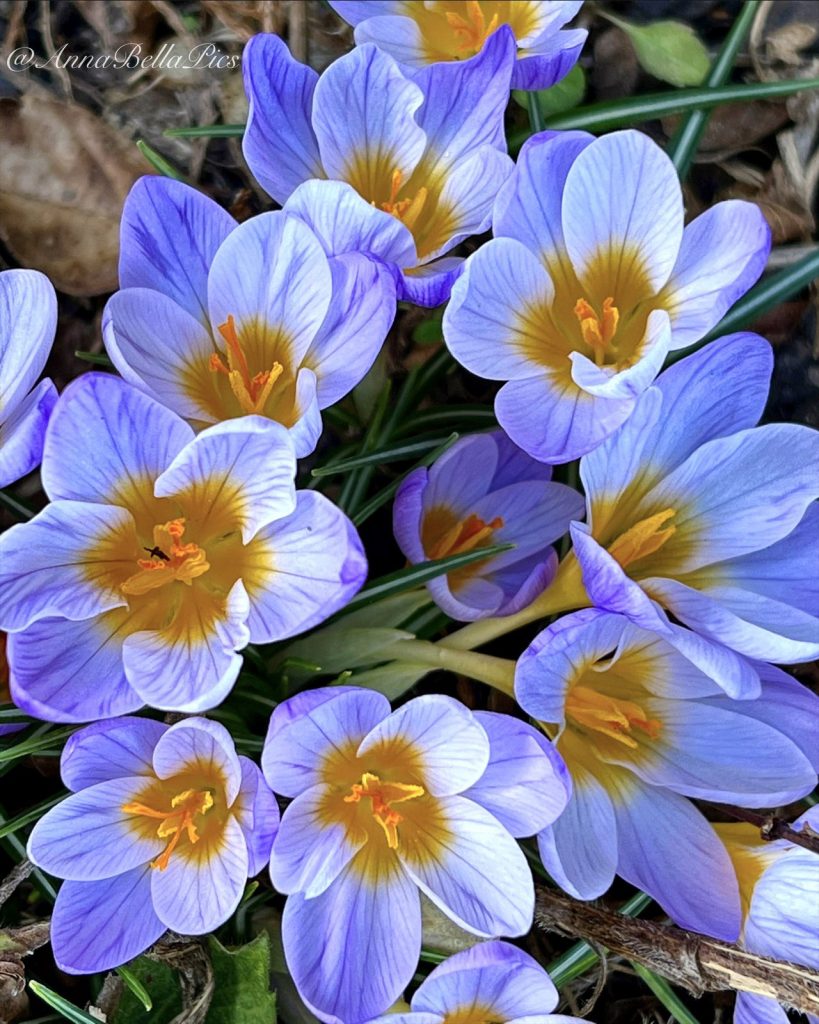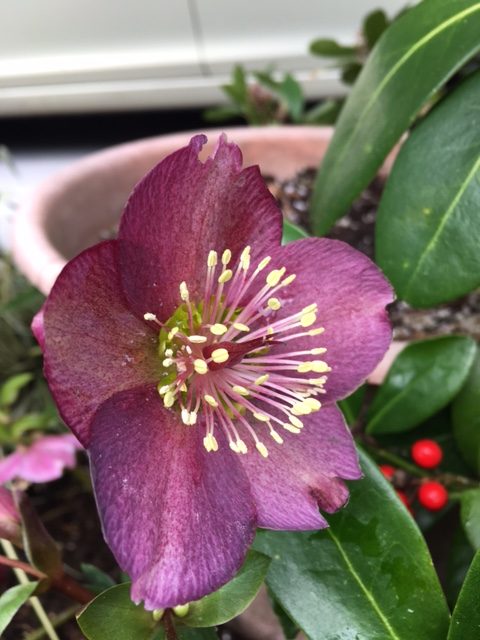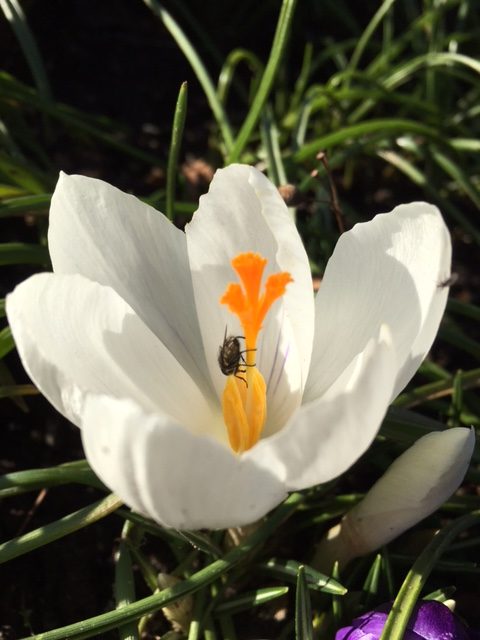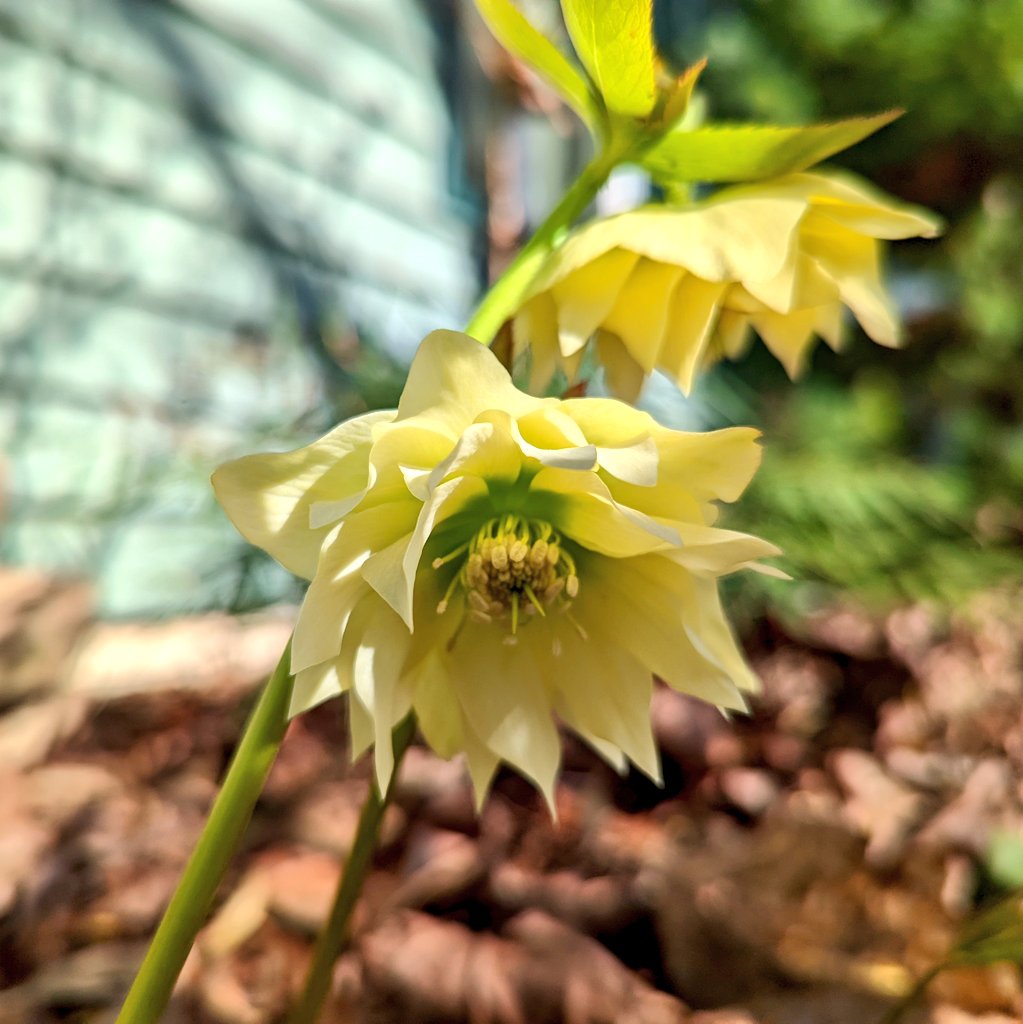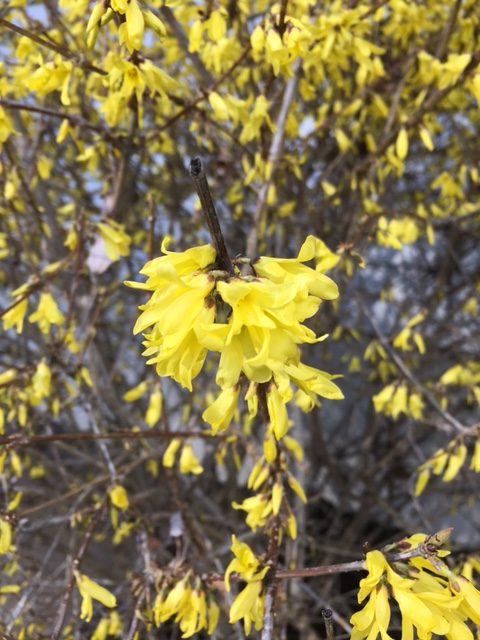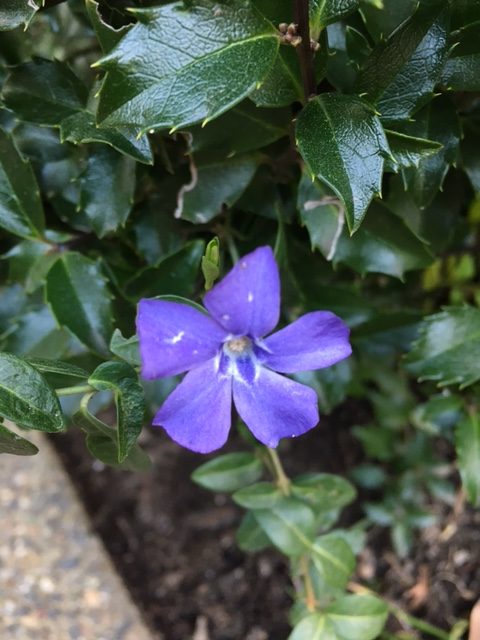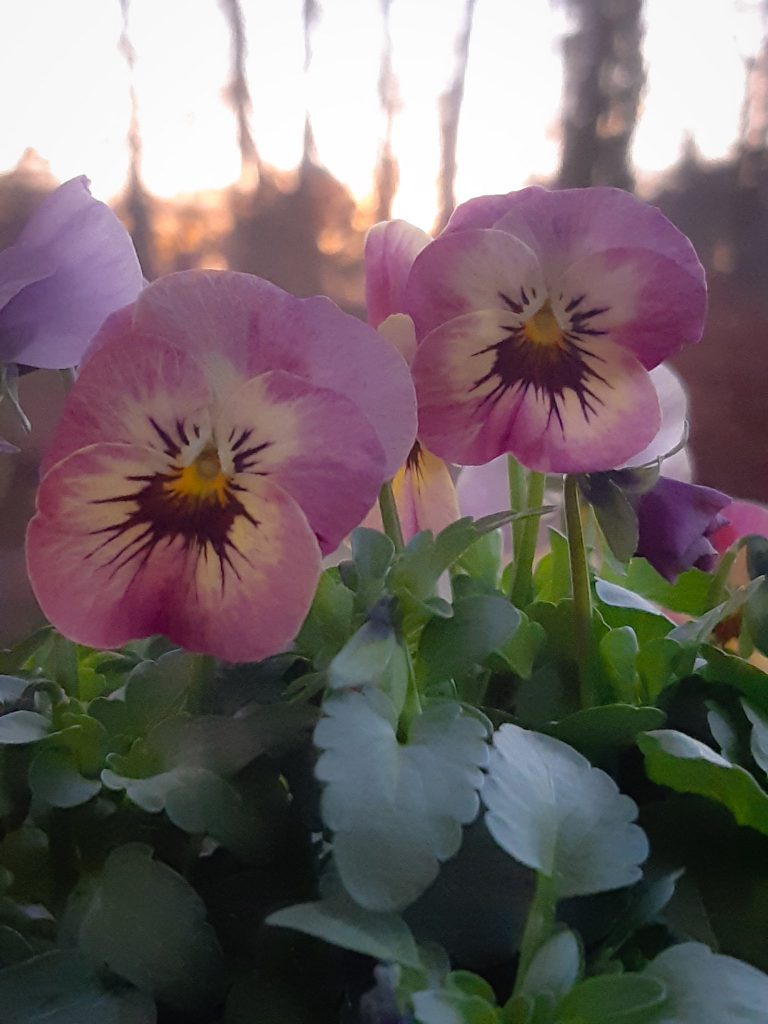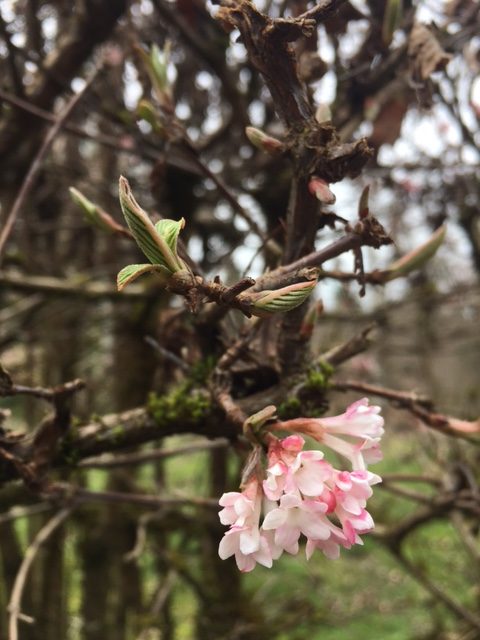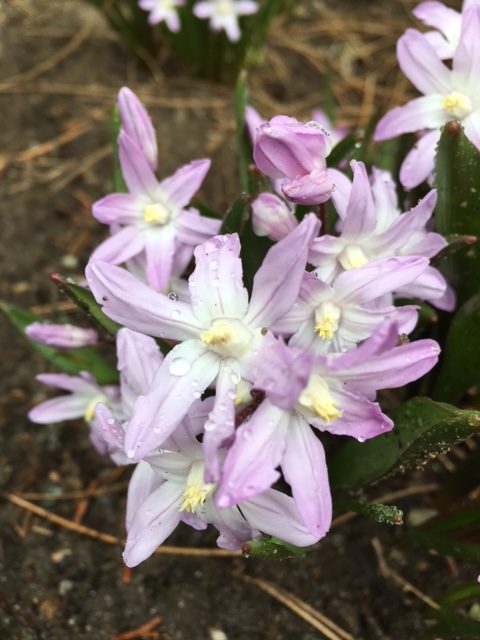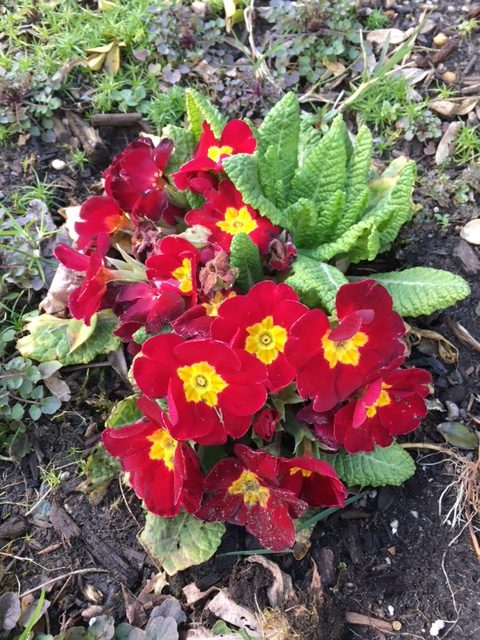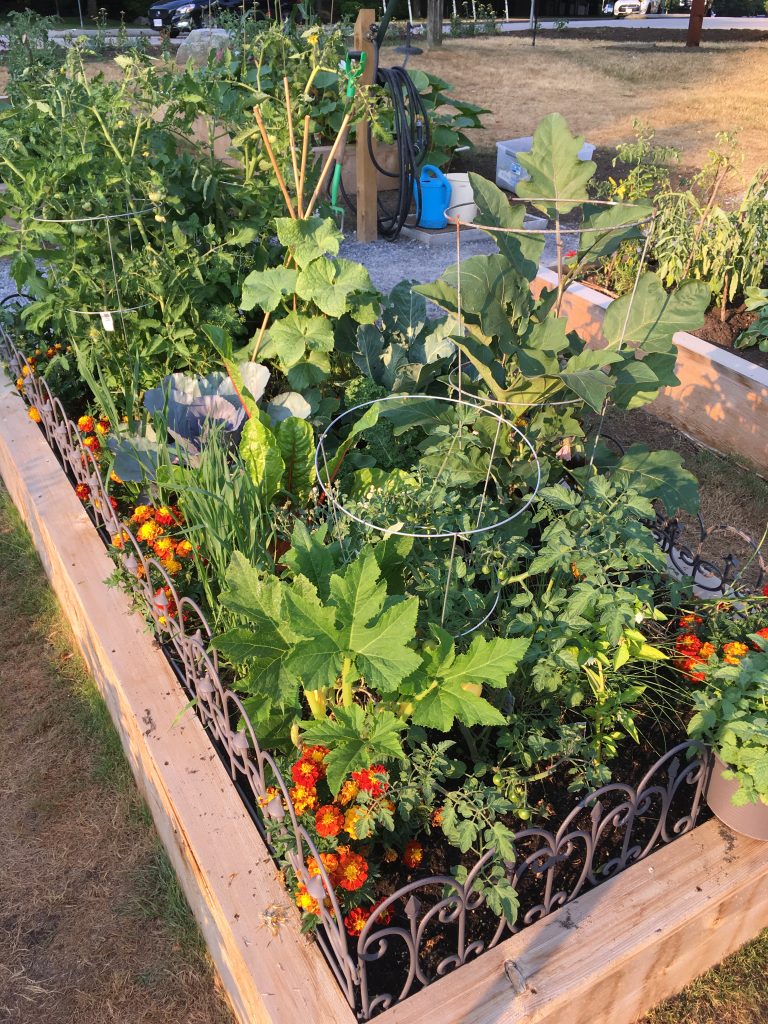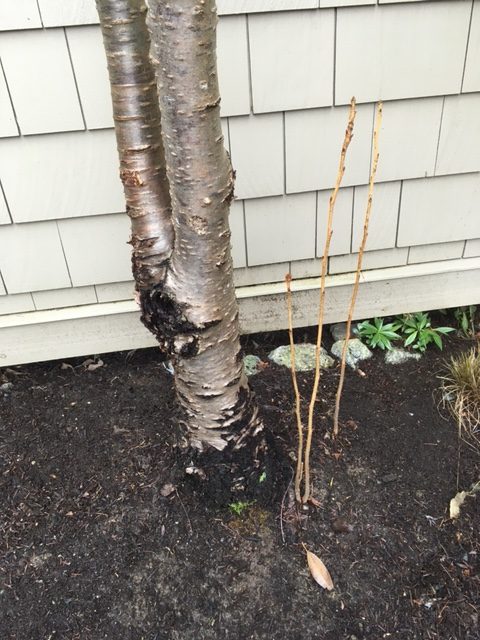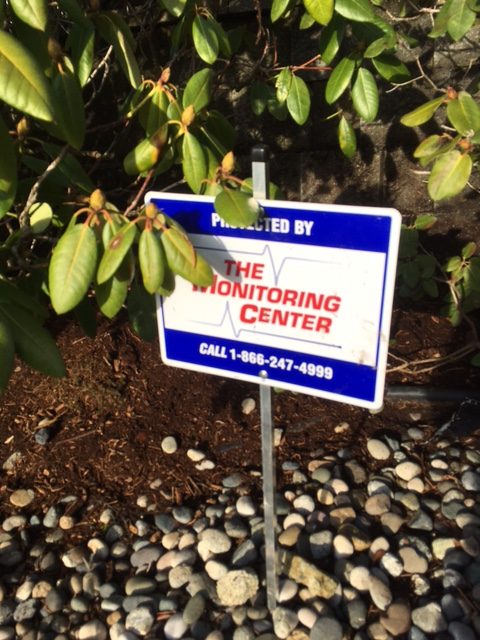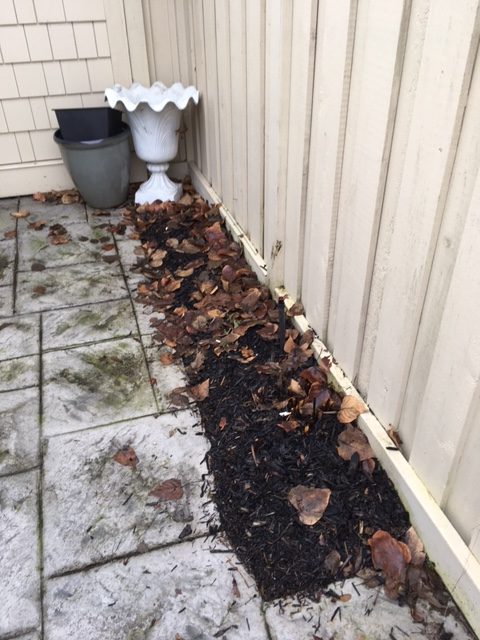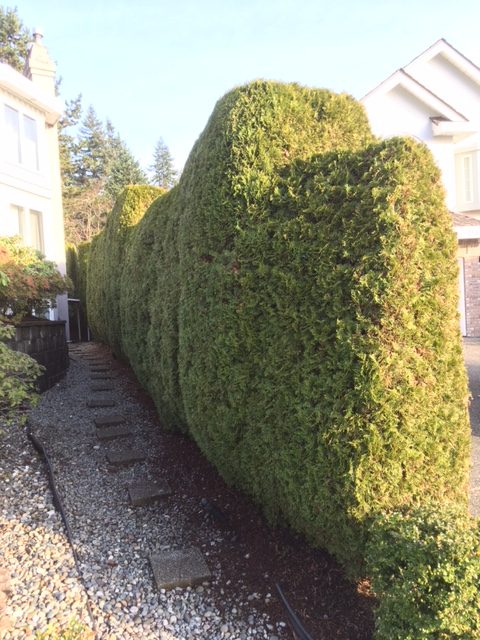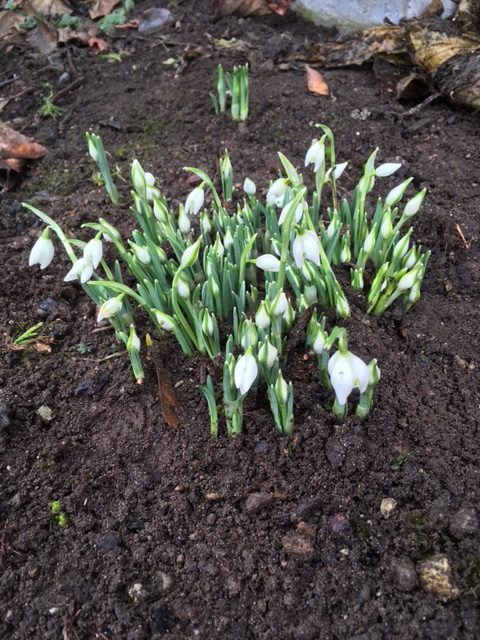Steps to take
I have a great residential client in Port Coquitlam, BC, and his main concern is tidiness. So, when the pin oaks (Quercus palustris) from a neighboring high school drop leaves on his property, he usually calls me in a panic.
Let’s see what I did at this house to put it to bed for the winter.
Lawns
Mowing in late November isn’t ideal but it had to be done. So, I pre-blew the oak leaf drop onto the lawn, raked up the bulk of it and then mowed over the rest. Done! Now we leave the lawns alone until spring.
The front lawn also got a final blade edge which should keep it nice and sharp until spring.
Annuals
Obviously, annuals are toast by late November. I took out the petunias from the curb pot; and I removed annuals from the front bed. I will most likely plant bulbs in the pot so we can surprise the wife: she loves pretty flowers!
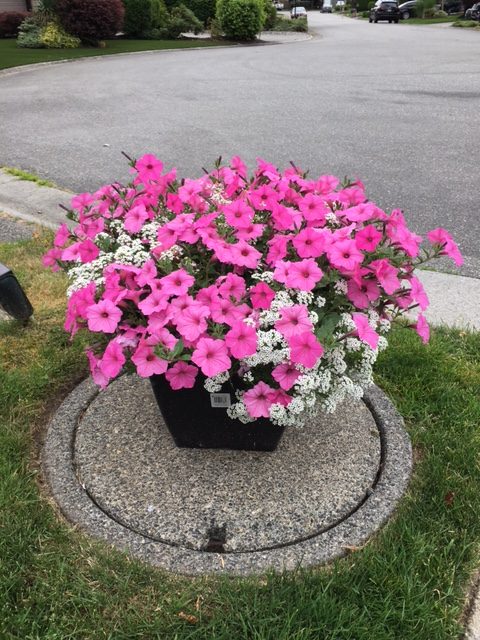
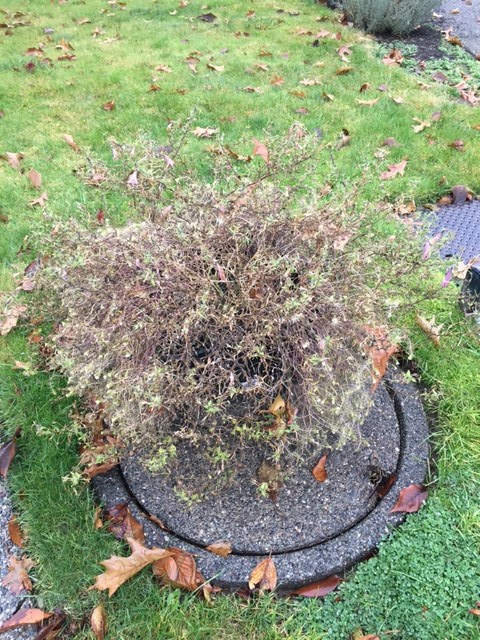
Blueberries
I have never winterized blueberries, so I Googled it and did it anyway. I pruned back most of the canes and moved the pots into a sheltered spot between the fence and shed. Then I put a tarp over the pots.
It might be better to park the pots in the garden shed but that’s not what the owners wanted. And it makes sense. They have two spotless Lexus cars in the garage, and when I forget to blow off their front door seat cushions, they text me about it!
Hydrangea
Again, it’s all about the look. The hydrangea was fine; just the leaves were still hanging on and the owners were creeped out every time they used the front entrance. So, I pruned the hydrangea back by a few bud sections and manually removed the spent leaves. If I cut it back too much, into old wood, you won’t get any flowers next year.
Eventually I will remove the canes that are close to the ground but for now it will do.
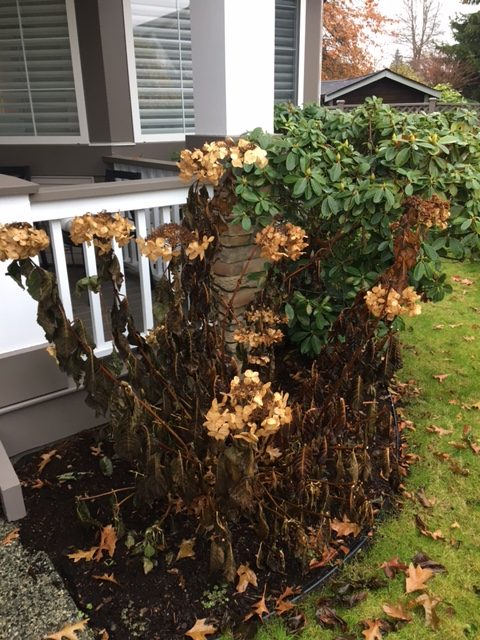
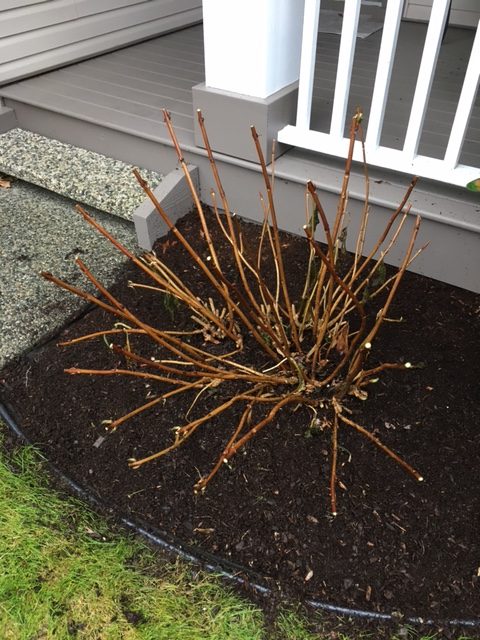
New planted bed
The new planted bed in the back got a quick cultivate to freshen it up a bit and to uproot any weeds. I deadheaded lavenders and cutback Liatris spicatas. Note that I left the Rudbeckia stems alone. The birds can enjoy the seeds and I can cutback the stems later, closer to spring. When you do this, cut the stem off close to the ground so you don’t leave a stub.
Final blow
As always, everything ends with one final blow, so the property is nice and clean. Since the front lawn is shared with the neighbors, I’m not ashamed to admit that I blasted some of the remaining leaves on the lawn into their groundcover.
There you have it. One last service in late November seals the deal. The garden should hold nicely into spring. I might stop by to blow the stubborn pin oak leaves; and to install the bulbs, secretly.
When I got home, it was dark. So, I made some coffee and sent off my hefty invoice.
